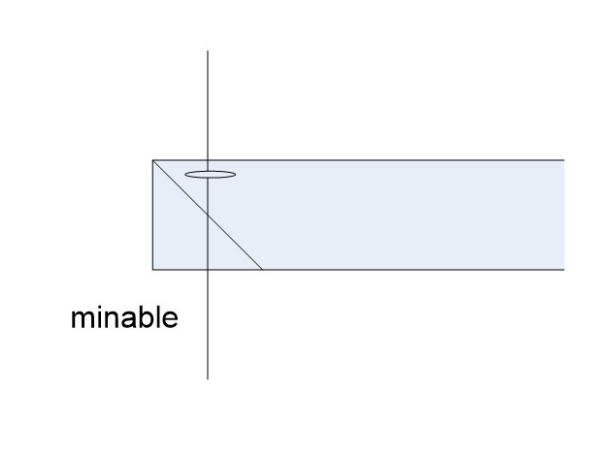Description and definition of minable and maxable on a Stuga flowline. Why and how this leads to larger trim and waste amounts at the start and end of the bar
Sommaire
Loading and Optimising
A major feature of the flowline software is its ability to optimise a batch for the best use of profile. This is absolutely necessary on the flowline because:
- The way that the machine is able to utilise profile is specialised and it is too difficult for another optimiser to manage. For example, when an arrow head is cut, the following piece has an arrow head on it already – this is a situation the optimiser will try to achieve because it saves profile and time
- The machine is unable to rout an operations or Y notch near the beginning and end of the bar – at the beginning the gripper is in the way, at the end the clamping is insufficient to support the profile. The on-board optimiser will try to avoid this situation by putting pieces with no end operations at the start and end of the bar. If this is not possible, the area will be earmarked as waste.
- When bar length measuring is used, the machine re-optimises on each bar length anyway.
Operations at the end of a bar
The flowline cannot machine anything where the gripper is, or at the very end of the bar. To cope with this, the software looks at each piece to see if there are any operations near the ends – i.e. if this piece was at the end, the operation would be unmachinable.
The unmachinable area at the gripper end is defined by the “minable” parameter in sparams.mul, the area at the end of the bar is defined by the “maxable” parameter.
If there is an operation on a piece that is in the minable / maxable area, the end prep is modified to a “mechanical” prep.
| Square Cut | | | Becomes | s |
| Mitre Cut | \ | Becomes | m |
| Mitre Cut | / | Becomes | i |
| Arrow Head Cut | > | Becomes | a |
In the above diagram:
| 1 | \ / | Becomes | m / |
| 2 | \ / | Becomes | \ / |
| 3 | \ / | Becomes | \ i |
On optimisation, the optimiser sees that there is a large waste associated with putting a “mechanical” prep at the end of a bar, and will therefore try a different combination. If this is not possible (e.g. on a short offcut), the optimiser will allow for the waste at the start or end of the bar.
Draft

 Français
Français English
English Deutsch
Deutsch Español
Español Italiano
Italiano Português
Português